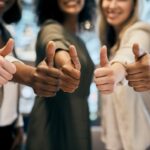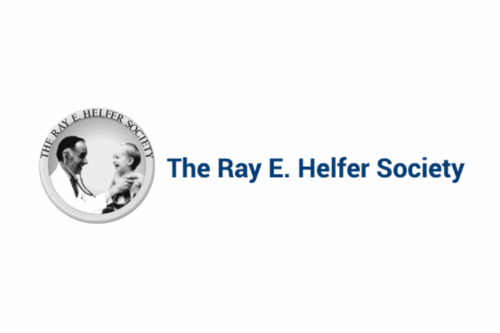You work for a nonprofit because you want to do good in your community, to be the change you want to see, to make a little dent in a big problem. Or hey, even a big dent! Sadly, all the resources in the world are for naught if you don’t track your efforts and make sure they’re actually making that dent. That’s where nonprofit KPIs come in.
A KPI, or key performance indicator, is the solution to figuring out whether your programs, fundraisers, and outreach are having the desired impact. KPIs tell you what’s working and what isn’t, so that you can refocus where necessary and ensure your time, money, and efforts are well spent. In today’s article, we’ll discuss what nonprofit KPIs are, how they work, and 10 of the best ones to track.
What are nonprofit KPIs?
At their simplest, nonprofit KPIs are data-based ways to measure how organizations are performing. More specifically, a KPI uses a dataset relating to some aspect of the nonprofit’s programs, marketing, volunteer coordination, fundraising, board participation, or any of a dozen other potential metrics. The end goal of tracking any KPI is to ensure the organization is using its resources well and fulfilling its mission as effectively as possible.
That said, KPIs don’t need to be grand or noble. The number of emails sent in a year is a KPI. So is the number of times a hashtag was used, the number of direct mailers you sent to local residents, or the percentage of surveys to which people responded. These are all marketing-related. Program-related examples might include the number of meals served, the number of free books distributed, or the number of free rides given.
Key performance indicators exist at every level of the organization and can differ widely in terms of data type, method of analysis, and what it tells you about the nonprofit. As with a for-profit, KPIs are used to translate the data rolling in and out of an organization into a meaningful narrative about its health and impact. Rather than focusing on shares, dividends, and profits, though, a nonprofit usually focuses on KPIs that demonstrate social or environmental benefits.
Whatever the focus area, KPIs are decidedly important. It’s not just a good idea to track them; it is a legal responsibility.
Why are nonprofit KPIs Important?
Nonprofits bring in a lot of money every year. According to the National Council of Nonprofits, there are 1.3 million charitable nonprofits overseeing 12.3 million employees and 64 million volunteers and board members, plus 10 million donors. And as of 2022, says the National Philanthropic Trust, Americans donated Americans $499.33 billion to charity. Many people don’t know that most of this funding comes from individuals, to the tune of $319.04 billion.
Organizations need a way to measure the impact of all that dough – and resources in general. Otherwise, the organization can’t confidently tell their donors, the public, and the government that they’re using the money well. Sure, it’s a problem to take vacations on the organization’s dime. But mismanagement doesn’t always make for a salacious headline; sometimes, your organization just doesn’t have a good handle on the finances.
High standards and the public eye
The thing is, charities are held to a high standard. To get that coveted 501(c)(3) designation, you have to follow very specific rules about where your money goes, how you track it, and from whom you get it. You are legally responsible for doing so, and the IRS does not tread lightly when people abuse their charitable status.
The government isn’t the only entity to watch out for, though. Your donors and volunteers also want to know that their money and time, respectively, are actually making a difference. If you can’t prove that you’re getting real work done, then they will happily (or with loud protests) take that time and money elsewhere.
KPIs to the rescue
Nonprofit KPIs help to clarify where money goes, how your organization separates different types of donations, and how successful your programs are – which is also a key factor in grantwriting. Whether you track KPIs using more traditional digital methods or have started using AI for nonprofits, you must keep your eye on the most important metrics.
Before we take a look at the top 10 KPIs, let’s take a quick detour to see what types of nonprofit KPIs are available overall.
What are the different types of nonprofit KPIs?
A nonprofit “performs” in all kinds of different ways. It serves the community first and foremost, living out its mission to address a social or environmental issue, for instance. However, it also serves many other communities and goals.
For instance, a nonprofit must keep its donors happy. It does that by ensuring that donors know where their money is going; they agree with where their money is going; they feel like they’re given enough options about how their money is used; and they feel recognized. The same is true of volunteers, who also need options, guidance, and recognition. The community as a whole – not just the community in need, which is only a fraction of the entire population – must also have information about the nonprofit and, ideally, support it at least ideologically.
A wealth of KPIs
Each of the above goals comes with one or multiple KPIs. You can track how well a population in need is being served with KPIs such as meals served, jackets donated, trees planted, or workshop attendance, for instance. Of course, depending on your cause, these will take their own form.
The same is true for how you track donors; donation amounts is a critical KPI, but you might also track how many of your donors give repeatedly, how many share your organization with their networks, and how many volunteer. Similarly, you might track how many of your volunteers donate, how many hours they put in, and how often they use a designated hashtag.
As you can see, nonprofit KPIs can take many different forms, and you can’t possibly hope to track every single one. Rather, you need to choose the ones that are most important to your bottom line. That’s why this guide exists: to help you determine which are the most important on which to place your focus. So, just how do you do that?
How to choose the right KPIs for your nonprofit
All right, it’s time to put the pedal to the medal. The rubber to the road. The free meal to the cafeteria plate … ? You get where we’re going with this. It’s time to choose your KPIs.
Nobody starts a nonprofit without hoping for a successful membership program, in which giving from the community and giving to the community happen in equal measure, in a virtuous cycle that helps to make that dent you’re hoping for. In order to make sure that’s happening, you need the right nonprofit KPIs. But with so many on offer, how do you choose?
For one thing, it helps to have good technology at your fingertips. Software that helps you track funds, build community, and report giving are all important.
For another, you need buy-in from everyone involved when choosing your KPIs. That includes your board chair, board members, founder or executive director, and heads of departments, at least. You should especially get input from finance and marketing, and wherever possible make the information you collect available to all. (Siloing is a problem in nonprofits like everywhere else, and it hinders good decision-making.)
Once you’ve gotten input, narrow your KPIs down. While you could track 17,000 metrics, this will just confuse and depress everyone. Choose the main types of data that your organization needs to know they’re doing well.
Not sure what those data types might be? Draw on feedback from donors, surveys, competitor reports, industry reports, required tax return info, and communications in general. This will tell you what the people who matter want to know.
10 nonprofit KPIs and metrics
It’s always best to take your queue from your own organization. But if you’re really not sure where to start with nonprofit KPIs, this list of 10 is a great launchpad. You should be tracking most or all of these anyway.
1. Gift amounts
One of the more basic nonprofit KPIs is your annual giving amount. In other words, how much do ya get every year? We’re not talking about government grants, which are a separate category, but rather donations from people, corporations, and private institutions. If this number is going up, yay! If it’s going down, boo!
In all seriousness, whether you’re getting more or less than last year is a serious feather in your cap or a red flag, depending on your situation. You absolutely must track this amount.
2. Donor growth
The goal for any nonprofit is that the number of active donors, people who didn’t just give once but give regularly (monthly, annually, etc.), is always growing. When combined with new donors – people or organizations who have recently come in – you want a total figure that is greater than the year before. Add in regained donors – folks who dropped off but you wooed back – there are all kinds of categories to track.
It’s important to note that confounding variables can come into play with such nonprofit KPIs. For instance, maybe you have fewer donors this year than last, but you got a bequest that accounted for a quarter of your annual giving. That can muddy the waters somewhat, and it’s also important to note that no charity should be heavily dependent on one donor.
As with other nonprofit KPIs, the goal is information: knowing what’s happening within your charity so you can share it with the world. You should still track these numbers, even knowing that there are some factors you can’t tease out.
3. Donor retention rate
Growth matters, but so does getting your donors to stick around. Yes, every penny counts, but if you spend all that time wooing a donor who leaves after a small donation, you’re not making the best use of your capital, your fundraising department, or your volunteer hours.
Donor retention is measured by dividing the number of donors who are active in a certain time period by the number of donors who existed at the beginning of that time period. This KPI lets you know if you’re keeping a good percentage of your donors on board. While many donations are a one-time deal (such as in response to a catastrophe), if you see massive attrition all the time, that’s an issue that needs to be addressed by operations and marketing.
Adjacent to the donor retention category, there are all kinds of nonprofit KPIs to track what’s going on with your giving members. These include:
- Revenue per donor: This is calculated by the total sum of revenue divided by the number of donors, giving you an average amount of money per donor (even if each donor didn’t give that specific amount)
- Donor acquisition cost: How much money was required to woo each donor? This will vary depending on whether you reached them through digital marketing, in-person outreach, events, or any other method.
Donor conversion rate, discussed next, relates to all of the above donor-related nonprofit KPIs, because it goes to the heart of whether your messaging works or not.
4. Donor conversion rate
Another very simple but very important nonprofit KPI? Donor conversion rate. Of all the people or corporations to whom you reach out, how many give? This number does not take into account the amount of giving, but whether or not the person or entity gave at all. If this KPI is getting higher, that means your marketing is working. If it’s dropping, something needs a tune-up.
5. Fundraising ROI
Fundraisers are a big deal. They require countless planning hours, high inputs of time and energy, and a goodly amount of enthusiasm from the community, otherwise they’re not good for much. But when the dust settles, how can you tell whether or not your fundraiser has made a difference? By checking your fundraising ROI, or return on investment, another of the most important nonprofit KPIs.
While “return on investment” might sound like a scary phrase, it’s actually pretty simple to calculate. Subtract the cost of the fundraiser by the funds generated, then divide the resulting number by the cost and multiply by 100.
The resulting number will ideally be positive, which means that you made more than you spent. If it’s negative, that is a major problem, not only financially but also optically. Address it ASAP, with professional consulting if necessary.
6. Landing page conversion rate
More math? Let’s be honest, nonprofit KPIs are pretty much all math, but it’s the good kind. The kind that lets you know where you’re succeeding and where you need to put in the work. As with open and click-through rates, your landing page conversion rate is a signal that you’re doing something right … or that you’re not.
“The average landing page conversion rate across all industries is 5.89%,” HubSpot reports. “10% is the benchmark for a good conversion rate.” However, says Nonprofit Learning Lab, the average conversion rate for a nonprofit donation page is about 17%. Start with trying to hit the industry-agnostic numbers, then work your way up.
Don’t forget about A/B testing when it comes to conversions of any kind. (This is true for email open and click-through rates as well, discussed below.) A/B testing simply means that you take two different approaches to your landing page, then measure which one works better.
When we say “approach,” however, we don’t mean that one landing page is serious, with heartrending pictures of children, while the other is happy and light, with bright Clipart. Rather, you want to keep every aspect of both landing pages the same except for one variable. Some examples of variables you might test include:
- Font
- Color scheme
- Placement of video (e.g. before or after the fold)
- Copy
- Call to action (CTA), or telling people how to move forward (donate, purchase, sign up)
- Imagery
- URL
… and pretty much any other variable you might use on any regular webpage. Again, the important thing is to change only one variable at a time. That way, if one page performs better than another, you know that’s the only thing that can account for it. Your marketing department/person should then update the landing page to incorporate the better-performing choice. Now change another variable, test it, and update the page to use the better-performing option. Rinse. Repeat.
7. Email open rates
The good news is, your email open rate couldn’t be simpler to calculate. You simply divide the number of emails opened by the number sent. The bad news is, most organizations don’t see the kinds of open rates that lead to robust growth and enthusiasm in the community.
Back to the good news: knowing the problem is the first step in the solution. Before you can do something to increase your email open rates, you need to know where they’re at and calculate the distance between that and where you’d like them to be. More good news? The average email open rate for a nonprofit is twice that of a traditional organization, says Nonprofit Tech for Good.
8. Email click-through rates
Click-through rates are related to open rates, but they are their own metric and deserve to be treated as such.
Why? Because if people are opening your emails at the expected rate but never clicking on the links in them to learn more about your offerings, that means you have a fundamental marketing problem. Perhaps it’s the design, maybe it’s the copy, possibly you’re sending from a spammy-looking address and people dismiss you quickly even if they open the email. Whatever the case, you need to measure click-through rates to know how your campaigns are doing.
A typical email click-through rate, according to the same source as above, is a little over 3%. These kinds of nonprofit KPIs can help you figure out how you’re doing compared to the average, and go from there.
9. Volunteer retention rate
Too often, volunteers are dismissed as a “nice to have” element of a nonprofit, when in reality, they are the backbone of most organizations. Tracking volunteer retention is similarly a must when it comes to nonprofit KPIs.
Volunteers come from all over, and you need information about who they are and how they’re performing so you can keep them around. This is especially critical with younger generations who mean well but maybe aren’t that familiar with volunteer environments.
According to Sterling Volunteers, “Most [Gen Z volunteers] are still students and are just beginning to start volunteering. They’re also the most diverse generation ever, and, like millennials, Generation Z were raised on the idea of community service.” While Gen Z means well and genuinely wants to help, they may not yet feel confident in their ability to voice their need for help. A KPI will tell you how good you are at reaching them.
On the other hand, more men than women work even today, regardless of educational attainment, says the Bureau of Labor Statistics. If a volunteer has spent much of their time in the home raising children and is in a professional environment for the first time, they may not feel empowered to voice their opinions or exercise their judgment. Therefore, it’s important to ensure you’re not alienating women with your volunteer coordination practices.
KPIs help here. They turn otherwise nail-biting questions (“Do our volunteers like us?”) into data-based queries (“Do we retain female volunteers in the 40- to 70-year-old age bracket as well as other demographics?”) Such granular questions can help you answer the main one: “Do our volunteers like working with us and want to stick around?”
10. Program efficiency
Program efficiency is what it sounds like, a KPI that measures whether your program/programs is/are getting the job done. In other words, do the actions you take as part of that program really achieve the stated goals of the program in particular and the mission overall?
As LitmanGerson Associates explains, “The program efficiency ratio is calculated by taking the organization’s program expenses and dividing it by the total expenses of the organization. This will result in a percentage or ratio of an organization’s program expenses to total expenses. Ideally, this percentage will be greater than 75%.”
There is one caveat, they add, which is that once you have your number, you should then compare it to the program efficiency ratios of other nonprofits in your niche. If they are similar, great, but if yours is lower than peers around you, that might signal trouble for the future – either because you could be doing your work more effectively or because people will question your methods even if those questions aren’t deserved.
As with all nonprofit KPIs, the goal is not to start spinning out, but rather to take note of what’s working and what isn’t. When you find something that could be better, go ahead and fix it.
Take your time with nonprofit KPIs … and do it right
And remember, as trite as it sounds, Rome wasn’t built in a day. Indeed, according to some sources, it took 1,229 years to build it (counting from its founding to its final sacking in 476 A.D.) and in many ways, Rome is still being built today. A good nonprofit is the same, chipping away at a big problem and making things better in little ways day in, day out.
The takeaway? Don’t let KPIs freak you out. Instead, treat them like what they are: information. If your organization operates aboveboard and genuinely cares about its community, then it’s unlikely you have anything to worry about. Use those facts to improve your offerings where you can, bit by bit, without worrying about building Rome in a day.
Final Thoughts
Before we wrap up, it’s worth acknowledging that most likely, you didn’t get into the nonprofit sector in order to do math. Yet data and analytics are as important in charitable giving as they are in any other industry, and without them, you may find yourself with good intention but few tools to ensure it gets put to good use.
Nonprofit KPIs prevent that from happening. They help avoid human errors, speed up decision-making, and prove to the world that your mission really does do what it says it does. Together, these abilities are key to solving the problem you’re here to solve. Because eventually, the rubber really does have to meet the road.
If you’re ready to stop trying and start doing, then nonprofit membership software can help. MemberClicks will help you reach your nonprofit goals, track donations and community engagement, and consolidate all your information in one place, so you always have access to it. We invite you to contact us for a demo today!
















